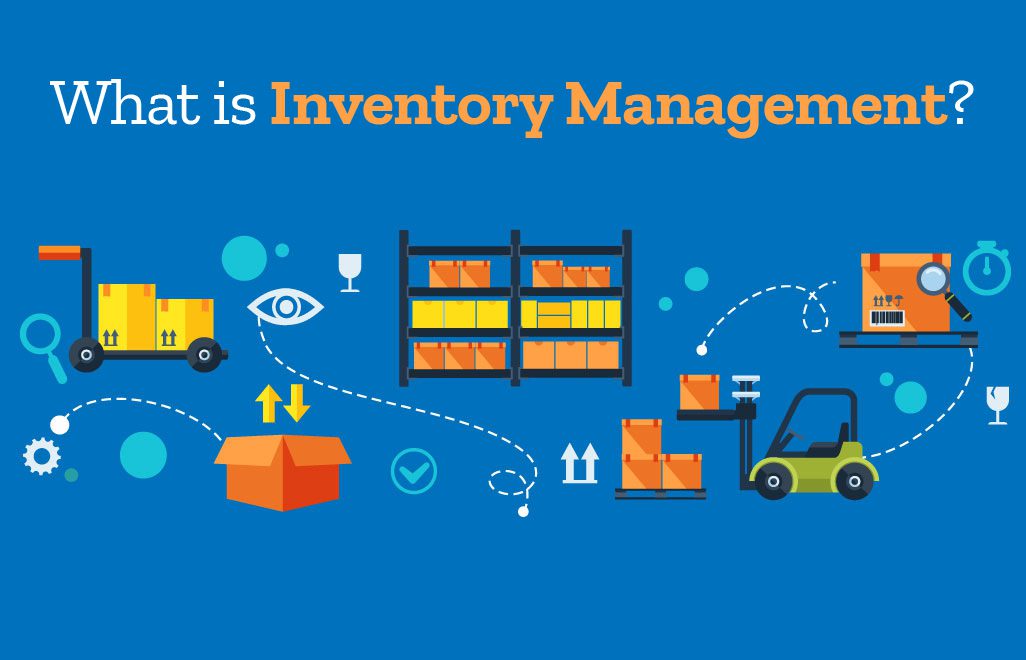
What is Inventory Management?
Introduction to Inventory Management
Inventory management is an essential aspect of any business that deals with a physical product. It involves the planning, organizing, and controlling of the flow of goods and materials from the point of production to the point of consumption. The primary objective of inventory management is to ensure that the right products are available in the right quantity, at the right time, and at the right place.
The introduction to inventory management begins with understanding the different types of inventory that a business may have. Raw materials, work-in-progress, finished goods, and maintenance, repair, and operations (MRO) inventory are the four main categories of inventory that a business may possess. Raw materials are items that are used in the manufacturing process, work-in-progress inventory refers to partially completed products, finished goods are the final products that are ready for sale, and MRO inventory is used to support the production process.
Effective inventory management is critical to the success of a business. Good inventory management practices can help businesses reduce waste, improve customer satisfaction, and increase profitability. It also helps businesses to minimize the risk of stockouts or overstocking, which can lead to lost sales or increased costs. In today’s competitive business environment, it is important for businesses to implement effective inventory management practices to remain competitive and meet customer expectations.
Thus, inventory management is a crucial aspect of any business that deals with physical products. It involves the planning, organizing, and controlling of the flow of goods and materials from the point of production to the point of consumption. The introduction to inventory management begins with understanding the different types of inventory that a business may have. Effective inventory management practices can help businesses reduce waste, improve customer satisfaction, and increase profitability. It is essential for businesses to implement effective inventory management practices to remain competitive and meet customer expectations.
Understanding Inventory Levels
This can be achieved through careful forecasting and planning. By analyzing historical sales data, market trends, and customer behavior, businesses can estimate future demand and adjust their inventory levels accordingly. Additionally, implementing inventory management systems and techniques, such as just-in-time inventory or economic order quantity, can help optimize inventory levels to minimize costs while ensuring that products are always available when needed.
In conclusion, understanding inventory levels is crucial for effective inventory management. It enables businesses to meet customer demand, avoid stockouts, and optimize costs. By carefully analyzing historical data, forecasting future demand, and implementing inventory management techniques, businesses can achieve the right balance of inventory levels to maximize profitability and customer satisfaction.Inventory management is a crucial aspect of running a successful business. It involves the careful monitoring and control of the goods a company holds in stock. One important subtopic within inventory management is understanding inventory levels. Inventory levels refer to the quantity of goods a company has at any given time. This information is essential for businesses to make informed decisions regarding purchasing, production, and sales.
Understanding inventory levels is crucial for businesses to maintain a balance between having enough stock to meet customer demands and avoiding excessive inventory that ties up capital. There are three main types of inventory levels that companies need to consider. The first is the minimum level, which represents the lowest quantity of stock that should be maintained to avoid stockouts. This level is determined by factors such as lead time, customer demand, and production capacity. The second is the maximum level, which represents the highest quantity of stock a company should have to avoid excessive carrying costs. This level is influenced by factors like storage capacity, order quantities, and sales forecasts. Finally, the reorder level is the point at which a company needs to replenish its stock to maintain desired inventory levels. It takes into account factors like lead time and safety stock to ensure uninterrupted supply.
By understanding inventory levels, businesses can optimize their operations and reduce costs. Maintaining the right balance of inventory levels helps to prevent stockouts, which can lead to dissatisfied customers and lost sales. On the other hand, excessive stock levels tie up capital and increase carrying costs. By accurately tracking and analyzing inventory levels, companies can identify patterns and trends in customer demand, allowing them to adjust their production and purchasing strategies accordingly. This enables businesses to reduce lead times, minimize stockouts, and maximize efficiency.
Understanding inventory levels is a vital aspect of effective inventory management. It involves determining the minimum, maximum, and reorder levels required to maintain optimal stock levels. By keeping inventory levels in check, businesses can ensure they have enough stock to meet customer demands while avoiding excessive inventory that ties up capital. This allows companies to optimize their operations, reduce costs, and satisfy their customers’ needs efficiently.
Determining Optimal Stock Levels
Inventory management also involves maintaining the right amount of stock to meet customer demand while minimizing costs. One of the key elements of inventory management is determining optimal stock levels. This refers to finding the perfect balance between having enough stock to fulfill customer orders without having excessive inventory that could tie up capital and increase storage costs.
To determine optimal stock levels, businesses need to consider several factors. First and foremost, they must analyze historical sales data to identify trends and patterns in customer demand. By understanding the demand patterns, businesses can estimate the average sales volume and predict future demand. This information is crucial for setting stock levels to ensure that enough inventory is available to meet customer needs during peak periods while avoiding overstocking during slower periods.
Another factor to consider when determining optimal stock levels is lead time. Lead time refers to the time it takes for a supplier to deliver the ordered goods. By accurately estimating lead time, businesses can plan their stock levels accordingly. For instance, if the lead time is long, it is crucial to maintain higher stock levels to avoid stockouts. On the other hand, if the lead time is short and reliable, businesses can maintain lower stock levels, reducing holding costs and the risk of obsolete inventory.
Lastly, businesses must also consider the cost of carrying inventory. Holding inventory incurs costs such as storage, insurance, and financing. These costs can quickly add up, particularly if excessive inventory is held for a long time. By finding the optimal stock levels, businesses can minimize these costs while ensuring that enough stock is available to meet customer demand. This requires striking a balance between carrying enough inventory to avoid stockouts and minimizing holding costs by reducing excess inventory.
Determining optimal stock levels is a critical aspect of inventory management. By analyzing historical sales data, considering lead time, and evaluating carrying costs, businesses can find the perfect balance between having enough stock to meet customer demand while minimizing costs. This ensures that businesses can operate efficiently, provide excellent customer service, and maximize profits.
Implementing Inventory Control Systems
Implementing inventory control systems is a crucial aspect of efficient inventory management for businesses. Inventory control systems are designed to track and manage the flow of goods and materials within an organization. These systems help businesses maintain optimal inventory levels, minimize stockouts, and reduce carrying costs. There are several key steps involved in implementing an inventory control system.
The first step in implementing an inventory control system is to conduct a thorough assessment of the existing inventory management processes and systems. This includes gathering data on current inventory levels, turnover rates, and lead times. By analyzing this information, businesses can identify areas of improvement and determine the specific needs and requirements for their inventory control system.
Once the assessment is complete, the next step is to select a suitable inventory control system that aligns with the organization’s needs and goals. There are various types of inventory control systems available, such as manual systems, barcode systems, and advanced software solutions. The choice of system depends on factors like the size of the organization, the complexity of inventory management, and the budget available. It is crucial to consider scalability and compatibility with existing systems to ensure a seamless implementation process.
After selecting the inventory control system, the final step is to implement and integrate it into the organization’s operations. This involves training employees on how to use the system effectively, configuring the system to meet specific business requirements, and establishing proper procedures for data entry and maintenance. It is essential to ensure that all relevant stakeholders are involved in the implementation process to maximize the system’s effectiveness. Regular monitoring and evaluation of the system’s performance are also necessary to identify any issues or areas for improvement.
Implementing inventory control systems is vital for businesses to effectively manage their inventory. By conducting a thorough assessment, selecting a suitable system, and properly implementing it, organizations can optimize inventory levels, reduce costs, and improve overall efficiency. Continuous monitoring and evaluation are necessary to ensure the system remains effective and adapts to changing business needs.
Review and Evaluation
Inventory management involves the systematic control and tracking of a company’s inventory, and one important subtopic within inventory management is review and evaluation. This refers to the process of regularly assessing the inventory levels and performance to ensure efficiency and effectiveness in meeting customer demands.
Reviewing and evaluating inventory involves several key steps. First, it is important to establish performance metrics and goals. This includes determining the desired inventory turnover rate, the ideal level of stock to be maintained, and the frequency of inventory checks. By setting clear objectives, businesses can measure their performance and identify any areas for improvement.
Once performance metrics are established, regular inventory reviews should be conducted. This involves physically counting and verifying the quantity and condition of items in stock. By comparing the actual inventory levels with the recorded data, businesses can identify any discrepancies or inaccuracies. Additionally, this process allows for the identification of slow-moving or obsolete items that may need to be addressed.
After reviewing the inventory, an evaluation of the findings is necessary. This involves analyzing the data collected during the review process and making informed decisions based on the results. For instance, if there are excessive levels of inventory, it may be necessary to implement strategies to reduce stock levels, such as implementing just-in-time inventory practices or offering promotions to stimulate sales. On the other hand, if there are inventory shortages or frequent stockouts, adjustments may need to be made to the supply chain or ordering processes to ensure adequate stock levels.
Therefore, the review and evaluation of inventory is a critical component of effective inventory management. By establishing performance metrics, conducting regular inventory reviews, and evaluating the findings, businesses can optimize their inventory levels and ensure that they are meeting customer demands efficiently. This process allows for the identification of areas for improvement and the implementation of strategies to optimize inventory control.



1 Comment
[…] common challenge in supply chain planning is inventory management. Balancing inventory levels is important to avoid stockouts or excess inventory, both of which can […]